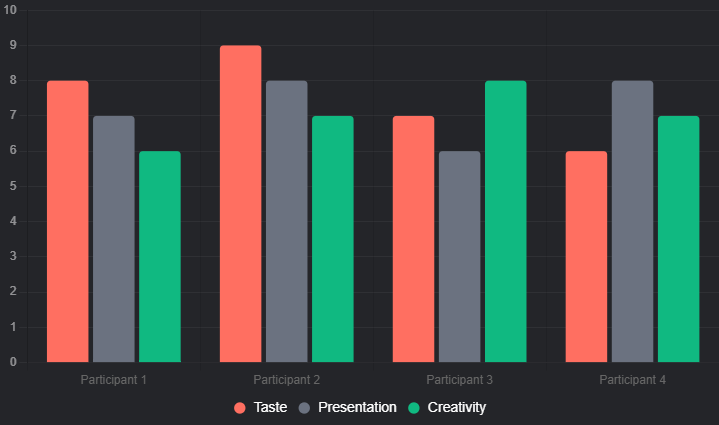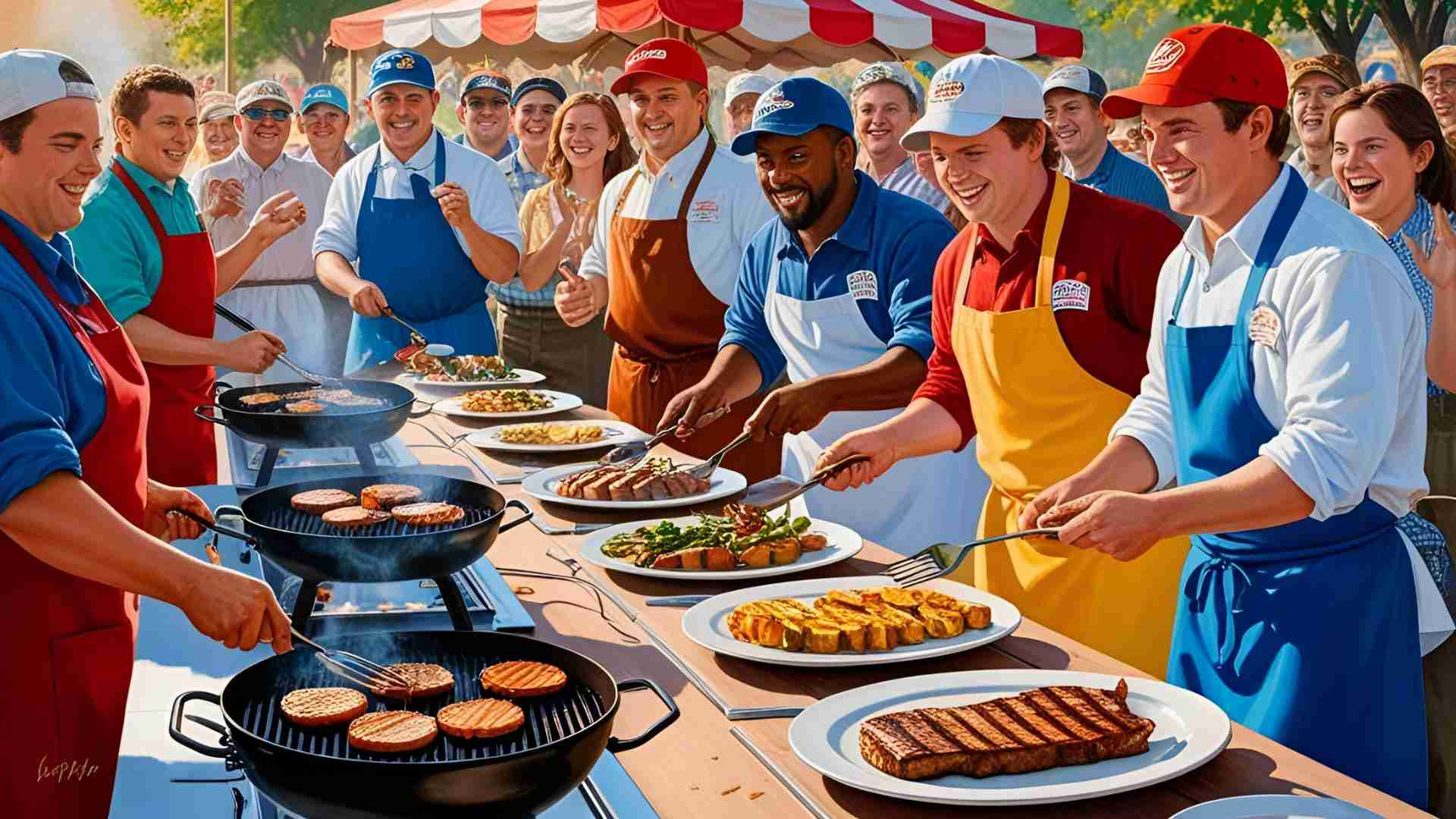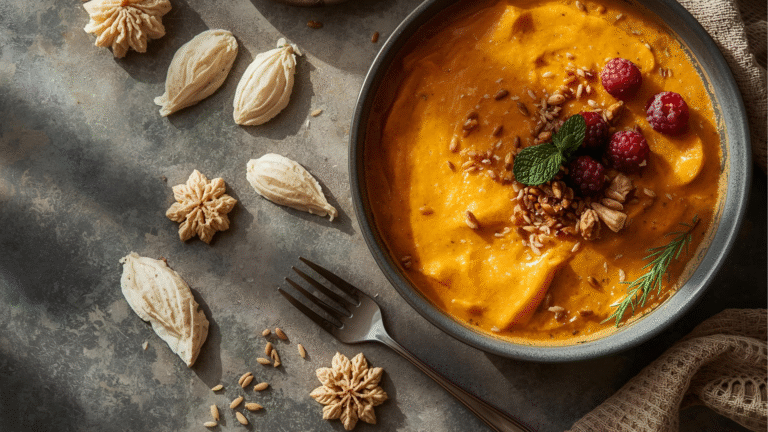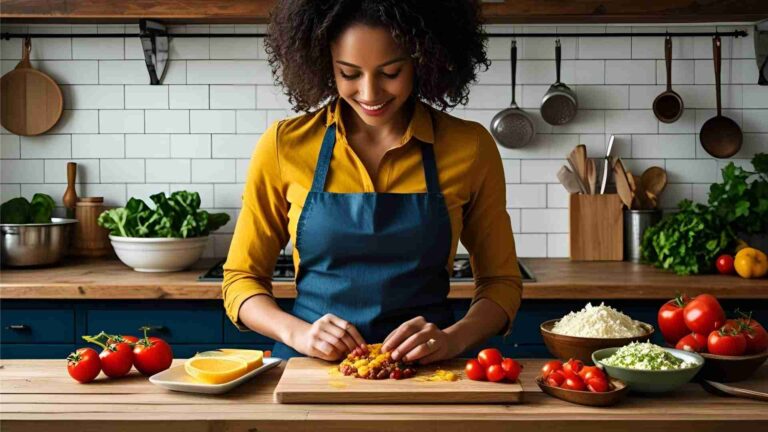How to Organise a Cooking Contest
Learn how to organize a cooking contest with our detailed guide. From planning and rules to themes and judging, create a memorable culinary event.
Cooking contests are a delightful way to bring people together, spark creativity, and celebrate culinary talent. Whether you’re hosting a school event, a corporate team-building activity, or a community cook-off, a well-organized cooking contest can create buzz, foster learning, and provide a fun, engaging experience. This guide offers a step-by-step approach to planning and executing a successful cooking contest, ensuring it’s memorable, inclusive, and aligned with your goals. We’ll cover everything from setting rules and choosing themes to managing logistics and promoting the event, with practical tips and tools to make your contest shine.
Why Organize a Cooking Contest?
Cooking contests have surged in popularity, fueled by shows like MasterChef and Hell’s Kitchen. They’re more than just a chance to showcase culinary skills—they’re a platform for community-building, creativity, and engagement. Here are three key reasons to host a cooking contest:
- Generate Buzz and Engagement: Cooking contests captivate audiences. According to Tasha Oren’s study, On the Line: Format, Cooking, and Competition as Television Values, the Food Network’s dish-focused reality shows grew from two in 2005 to 16 in 2014, reflecting their massive appeal. A well-promoted contest can create online buzz, drawing attention to your event or brand.
- Cost-Effective Catering: Participants prepare their own dishes, reducing the need for external catering. This saves time and money while allowing guests to enjoy unique, freshly made food. A degustation-style tasting can enhance the experience, letting attendees sample and evaluate dishes.
- Learning and Skill Development: Cooking contests offer educational value. Participants learn about meal planning, nutrition, and food safety while honing their culinary skills. For students, amateurs, or professionals, the contest provides a platform to grow and showcase their abilities.
Step-by-Step Guide to Organizing a Cooking Contest
1. Define Your Goals and Audience
Before diving into logistics, clarify the purpose of your contest. Are you aiming to:
- Foster networking at a corporate event?
- Promote a food brand or product?
- Engage students in a school setting?
- Celebrate community spirit?
Your goals will shape every aspect of the event, from the theme to the judging process. Identify your target audience—students, home cooks, professional chefs, or a mix—and tailor the contest to their interests and skill levels.
2. Develop Clear Contest Rules
Rules provide structure and ensure fairness. Here are key points to include in your contest guidelines:
- Workstations and Equipment: Specify the number of cooking stations, available equipment (e.g., stovetops, ovens, grills), and safety protocols. Ensure all participants have equal access to tools.
- Appropriate Attire: Require clean, practical clothing, such as aprons and closed-toe shoes. For professional contests, consider chef uniforms; for casual events, allow flexibility.
- Ingredients: Decide whether participants bring their own ingredients, use a provided pantry, or face a mystery basket challenge. List any restricted ingredients (e.g., no alcohol for school contests).
- Time Limits: Set a preparation and cooking time, typically 1–2 hours, to keep the event dynamic. For example, a 60-minute limit works well for most dishes.
- Dish Presentation: Require participants to plate one serving for judges and, if applicable, additional servings for tasting. Specify garnishing guidelines to enhance visual appeal.
- Judging Criteria: Outline how dishes will be evaluated (e.g., taste, texture, presentation, creativity, adherence to theme). Share a score sheet in advance to guide participants.
- Collaboration Rules: Clarify whether the contest is individual or team-based. For team events, define roles and cooperation guidelines.
- Safety Protocols: Emphasize food safety practices, such as handwashing, separating raw and cooked foods, and cooking to proper temperatures (e.g., 165°F for poultry).
Sample Contest Rules (Chart):

3. Choose an Engaging Theme
A theme gives your contest focus and excitement. It can reflect the audience, location, or a specific dish. Here are some popular themes:
- School Contest: Apple Adventure—participants create dishes using apples, integrating math or literacy activities for educational value.
- Holiday Celebration: Mother’s Day Feast—a contest for moms showcasing family-favorite recipes.
- Professional Contest: Southeast Asia Showdown—dishes inspired by Southeast Asian cuisine, judged by a renowned chef.
- Summer Party: BBQ Battle—grilled meats and vegetables, perfect for an outdoor event.
- Product Promotion: Brand-Specific Challenge—participants use a specific product (e.g., a new barbecue sauce) in their recipes.
The theme should align with your audience’s interests and the contest’s goals. For example, a corporate event might use a Global Fusion theme to encourage teamwork across diverse groups.
4. Plan the Menu and Nutrition Focus
Encourage participants to plan a menu that complements their dish and aligns with nutritional guidelines, such as those from MyPlate.gov. A balanced menu should include:
- Variety: Diverse textures (crisp, chewy, soft), colors, flavors, and temperatures.
- Food Groups: Representation of grains, vegetables, fruits, dairy, and protein.
- Nutrition Awareness: Participants should know the main nutrients in their dish (e.g., protein in chicken, fiber in vegetables) and their benefits.
Example Menu:
| Meal | Dish | Food Group |
|---|---|---|
| Breakfast | Oatmeal with Pecans, Toast, Juice | Grains, Fruit |
| Lunch | Ham and Cheese Sandwich, Veggies | Protein, Grains, Vegetables |
| Snack | Granola Bar, Apple, Milk | Grains, Fruit, Dairy |
| Dinner | Foil-Packed Chicken Fajita, Salad, Roll, Cherry Crisp, Milk | Protein, Vegetables, Grains, Fruit, Dairy |
Cost Per Serving Example (Foil-Packed Chicken Fajita):
| Ingredient | Cost | Quantity Used | Total Cost |
|---|---|---|---|
| Instant Brown Rice | $2.62/box | 1.5 cups | $1.31 |
| Taco Seasoning | $0.99/pack | 1 tsp | $0.50 |
| Chicken Breast | $3.19/lb | 4 halves | $6.38 |
| Green and Red Pepper | $2.00 | 1 each | $2.00 |
| Salsa | $2.99/16oz | 0.5 cup | $0.75 |
| Shredded Cheese | $4.00/lb | 0.5 cup | $0.50 |
| Heavy-Duty Foil | $0.50 | 4 sheets | $0.50 |
| Total | $11.94 | ||
| Cost per Serving (4) | $2.99 |
Participants should display their recipe and menu on two 8.5×11-inch posters, including ingredients, preparation steps, servings, and cost per serving. Posters should be neat, readable, and visually appealing, with simple decorations to enhance presentation.
5. Set Up the Judging Process
Judging is the heart of the contest, providing closure and excitement. Create a clear framework:
- Judging Criteria: Evaluate dishes on taste (40%), presentation (20%), texture (15%), aroma (10%), color (10%), and adherence to theme (5%). Share the score sheet with participants in advance.
- Judges: For professional contests, invite culinary experts or local chefs. For community or school events, consider public voting or a mix of expert and audience judges to boost engagement.
- Scoring System: Use a point-based system (e.g., 1–10 per category) for consistency. Automate vote collection with tools like Judgify for large events.
- Feedback: Encourage judges to provide constructive verbal feedback to help participants improve.
Sample Score Sheet:
| Category | Points (1–10) |
|---|---|
| Taste | |
| Presentation | |
| Texture | |
| Aroma | |
| Color | |
| Adherence to Theme | |
| Total |
Judging Flowchart:

6. Arrange Logistics and Equipment
Logistics are critical to a smooth event. Consider the following:
- Venue: Choose a space with adequate cooking facilities, such as a school kitchen, community center, or outdoor area with portable grills. Ensure access to power, water, and sanitation.
- Tables: Each participant needs a card table (approximately 34×34 inches) for their place setting, posters, and dish. Encourage participants to bring their own to avoid surprises.
- Supplies: Provide or specify required equipment (e.g., cutting boards, knives, measuring cups). For outdoor events, include grills or portable stoves.
- Table Settings: Require participants to bring tablecloths, placemats, dishes, flatware, and a centerpiece that fits the theme. Ensure settings align with the menu (e.g., no fine china for a picnic theme).
- Food Safety: Enforce strict guidelines:
- Wash hands and surfaces before and after handling raw ingredients.
- Use separate cutting boards for produce and raw meat.
- Cook foods to safe temperatures (e.g., 165°F for chicken).
- Refrigerate perishables within 2 hours to avoid the danger zone (40°F–140°F).
7. Promote the Event
Effective promotion maximizes participation and engagement. Use a mix of strategies:
- Social Media: Share updates, teasers, and contestant profiles on platforms like Instagram and X. Use hashtags like #CookingContest2025 or #FoodieChallenge.
- Email Marketing: Send themed invitations via tools like Canva or Mailchimp.
- Local Media: Pitch to community newspapers or food blogs for coverage.
- Word of Mouth: Encourage participants to invite friends and family for in-person events.
- Paid Ads: Use targeted Google Ads or social media ads to reach food enthusiasts.
For brand-focused contests, highlight the product (e.g., “Create a dish with our new BBQ sauce!”) to drive engagement and sales.
8. Host the Contest
On the day of the event, create a welcoming and energetic atmosphere:
- Welcome Participants: Greet contestants, review rules, and assign workstations.
- Start Cooking: Kick off with a countdown and play upbeat music to set the mood.
- Monitor Time: Enforce time limits and provide warnings (e.g., “10 minutes remaining!”).
- Serve Judges: Each participant presents one serving to the judges, placed on their table setting. Additional servings can be shared with attendees.
- Clean-Up: Deduct points for messy workstations to encourage responsibility.
9. Announce Winners and Celebrate
Tally scores promptly and announce winners with flair. Offer prizes like gift cards, kitchen gadgets, or branded merchandise. For example:
- 1st Place: $50 gift card and a trophy.
- 2nd Place: Cookbook and apron.
- People’s Choice: Free product samples.
Encourage attendees to sample dishes buffet-style and share recipes, fostering community spirit. Capture photos and videos to share on social media, extending the event’s reach.
10. Evaluate and Improve
Post-event, gather feedback from participants, judges, and attendees to refine future contests. Use tools like Judgify for analytics on voting patterns or participant engagement. Reflect on what worked (e.g., theme resonance) and what didn’t (e.g., logistical hiccups) to enhance the next event.
Tips for a Memorable Cooking Contest
- Keep It Simple: Focus on fun and creativity rather than overly complex dishes.
- Encourage Teamwork: For large groups, form teams to foster collaboration.
- Prepare for Weather: For outdoor events, have tents or canopies as a backup.
- Provide Refreshments: Offer drinks like lemonade or infused water to keep participants hydrated.
- Incorporate Learning: For students, tie the contest to educational goals, like nutrition or budgeting.
Nutrition and Food Safety: Key Considerations
Participants should understand the nutritional value of their dishes. Here’s a quick guide to key nutrients and their benefits:
| Nutrient | Function | Sources |
|---|---|---|
| Protein | Builds and repairs tissues | Chicken, eggs, beans, dairy |
| Carbohydrates | Provides energy, fiber aids digestion | Grains, fruits, vegetables |
| Fats | Supports vitamin absorption, protects organs | Oils, nuts, avocados |
| Vitamin A | Supports vision, skin, and immune health | Carrots, spinach, sweet potatoes |
| Vitamin C | Aids wound healing, boosts immunity | Citrus, peppers, strawberries |
| Calcium | Strengthens bones and teeth | Milk, cheese, yogurt |
| Iron | Supports oxygen transport in blood | Red meat, spinach, lentils |
Food Safety Tips:
- Clean: Wash hands, utensils, and surfaces thoroughly.
- Separate: Use separate cutting boards for raw meat and produce.
- Cook: Ensure foods reach safe internal temperatures (e.g., 165°F for poultry).
- Chill: Refrigerate perishables within 2 hours to prevent bacterial growth.
Tools to Streamline Your Contest
Consider using event management software like Judgify to:
- Manage registrations and participant data.
- Automate judging and vote collection.
- Analyze engagement metrics for future planning.
For budget-conscious organizers, free tools like Canva for invitations or Google Forms for registrations can be effective.
Sample Contest Idea: Summer BBQ Battle
Theme: Grilled meats and vegetables.
Rules:
- Prepare a dish in 60 minutes using provided grills.
- Include at least one vegetable and one protein.
- Present one serving to judges, with additional servings for tasting.
Judging Criteria: Taste (40%), presentation (20%), creativity (20%), texture (10%), adherence to theme (10%).
Prizes: $50 gift card (1st), BBQ cookbook (2nd), branded apron (People’s Choice).
Promotion: Share on Instagram with #SummerBBQBattle and email local food bloggers.
Sample Chart (Participant Scores):

Conclusion
Organizing a cooking contest is a rewarding endeavor that brings people together through a shared love of food. By setting clear rules, choosing an engaging theme, and prioritizing nutrition and safety, you can create an event that’s both fun and meaningful. Whether it’s a school competition, a corporate team-builder, or a brand promotion, a well-planned cook-off can generate excitement, foster learning, and leave lasting memories. So, grab your apron, rally your participants, and let the culinary creativity begin!
Please share these How to Organise a Cooking Contest with your friends and do a comment below about your feedback.
We will meet you on next article.
Until you can read, Slow Cooker Chocolate Chip Cookie Cake






